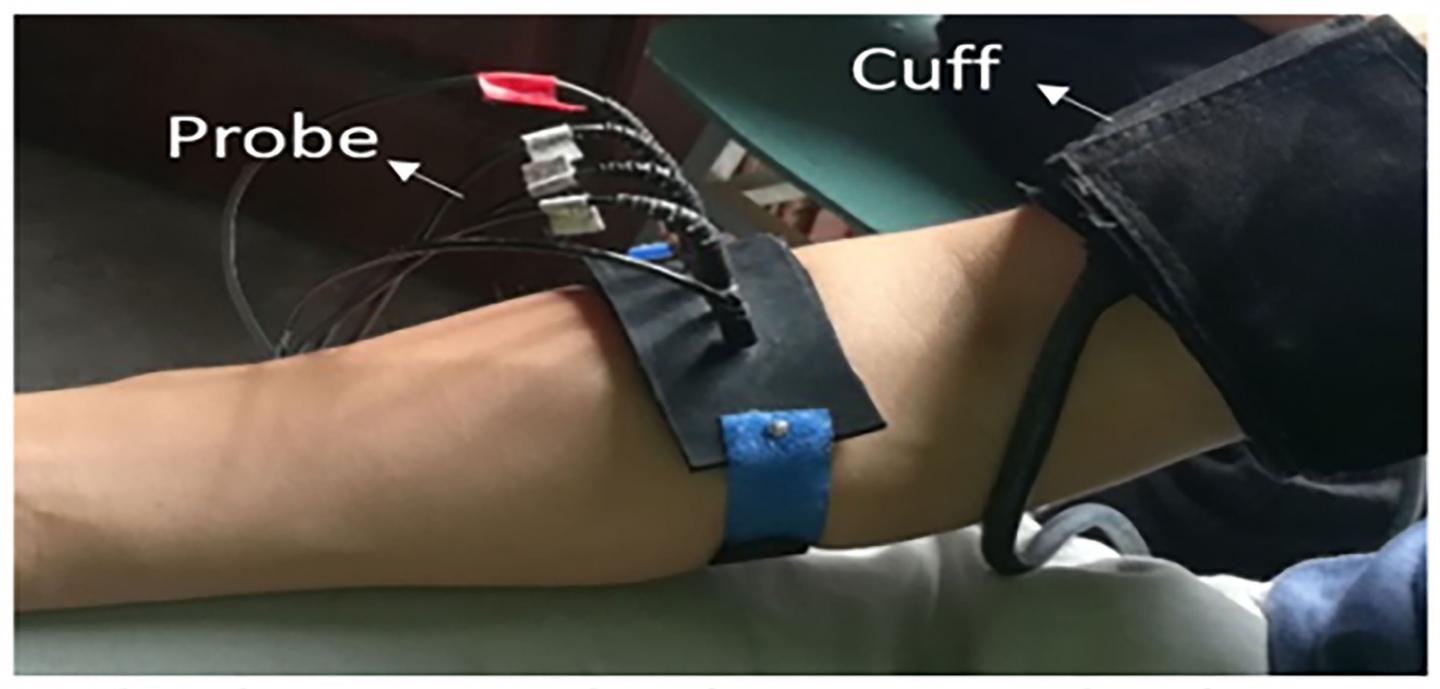Cheap and compact instrument based on two near-infrared light techniques diagnoses poor blood flow quickly and noninvasively

Credit: Hua Feng
WASHINGTON, D.C., June 11, 2019 — Stroke, one of the leading causes of death worldwide, is normally caused by poor blood flow to the brain, or cerebral ischemia. This condition must be diagnosed within the first few hours of the stroke for treatment to be effective, according to the Mayo Clinic.
Researchers from the Army Medical University and China Academy of Engineering Physics have developed a device that uses near-infrared light to monitor blood flow. The hybrid instrument, which relies on the combination of two light measurement techniques, could be used to quickly and noninvasively diagnose cerebral ischemia. The work is described in AIP Advances, from AIP Publishing.
Liguo Zhu, an author on the study, said that the instrument works thanks to near-infrared diffuse optical spectroscopy, which analyzes light scattered from tissues to calculate the amount of oxygen and blood within an area, and diffuse correlation spectroscopy, which analyzes fluctuations in tissue-scattered light to measure the rate of blood flow, or blood flow index.
“We can measure blood volume, blood oxygenation and blood flow using suitable near-infrared techniques,” Zhu said, adding that near-infrared light penetrates 1 to 3 centimeters and allows researchers to probe under the skin.
To test their instrument, the authors strapped a device probe to a human subject’s forearm, then inflated an arm cuff around the subject’s bicep to block off blood circulation. The authors found that the measured light attenuated, or reduced in intensity, as blood flow was cut off and brightened again when the arm cuff was removed — mirroring the decrease and subsequent increase in oxygen and blood at the probe area. At the same time, the measured autocorrelation, or time lag, function decayed less rapidly when blood flow was cut off, showing that blood was moving more slowly through the area.
The team’s device can record a comprehensive profile of a body part’s hemodynamics, or blood circulation, said Hua Feng, another author on the study. This capability contrasts those of previous instruments, which could only characterize certain aspects of blood flow. Feng added that devices should measure as many “hemodynamic parameters” as necessary to obtain an accurate diagnosis, as “the hemodynamics of stroke is complex.”
The device has another advantage: It is cheap and compact.
“(Both techniques) share the same detectors, which decreases the number of detectors (compared to other instruments),” Zhu said. “The optical switch makes the combination of incoherent and coherent light sources simple, and the custom software makes measurement quick.”
###
The article, “Simultaneous in vivo measurements of the total hemoglobin, oxygen saturation, and tissue blood flow via hybrid near-infrared diffuse optical techniques,” is authored by Detian Wang, Long Wang, Peng Gao, Ruiqiang Shi, Liguo Zhu, Qixian Peng, Zeren Li, Jianheng Zhao, Tunan Chen, Fei Li and Hua Feng. The article will appear in the journal AIP Advances on June 11, 2019 (DOI: 10.1063/1.5095699). After that date, it can be accessed at http://doi.
ABOUT THE JOURNAL
AIP Advances is an open access journal publishing in all areas of physical sciences — applied, theoretical, and experimental. All published articles are freely available to read, download, and share. The journal prides itself on the belief that all good science is important and relevant. Our inclusive scope and publication standards make it an essential outlet for scientists in the physical sciences. See https:/
Media Contact
Larry Frum
[email protected]
Related Journal Article
http://dx.




